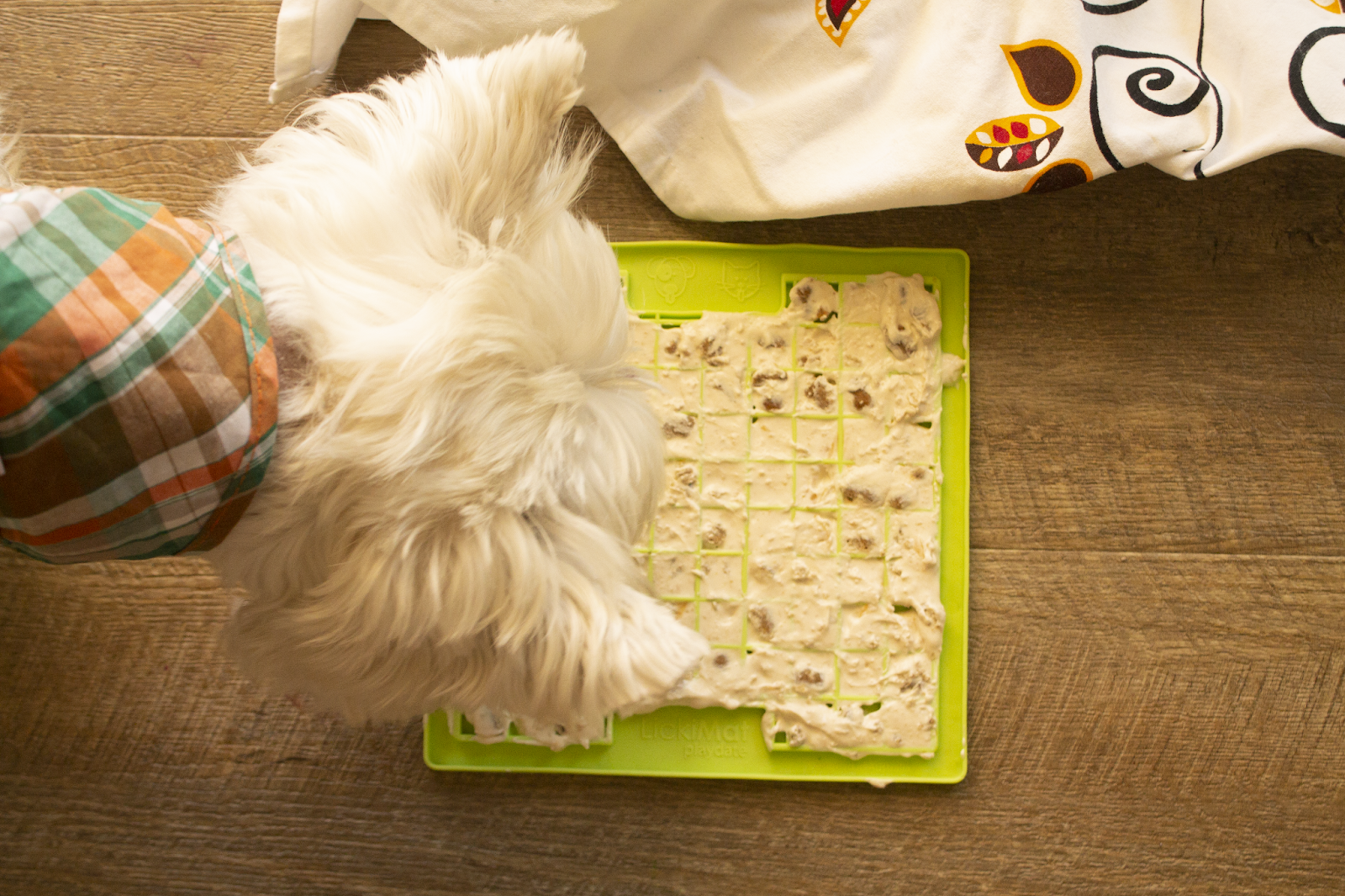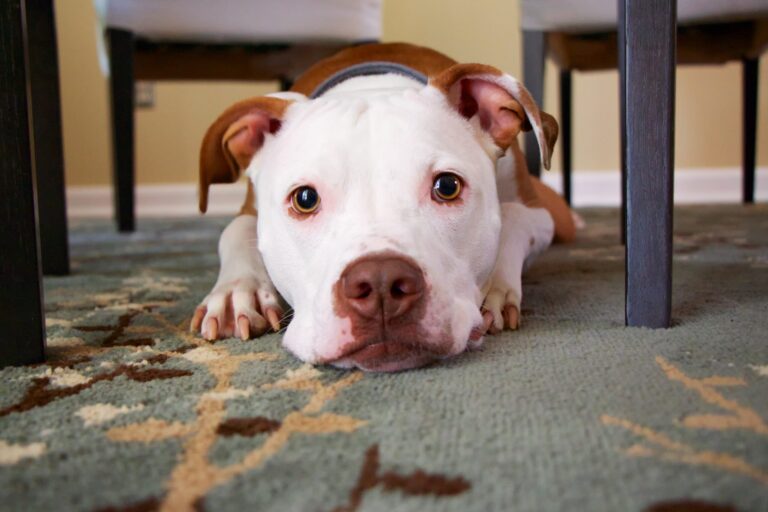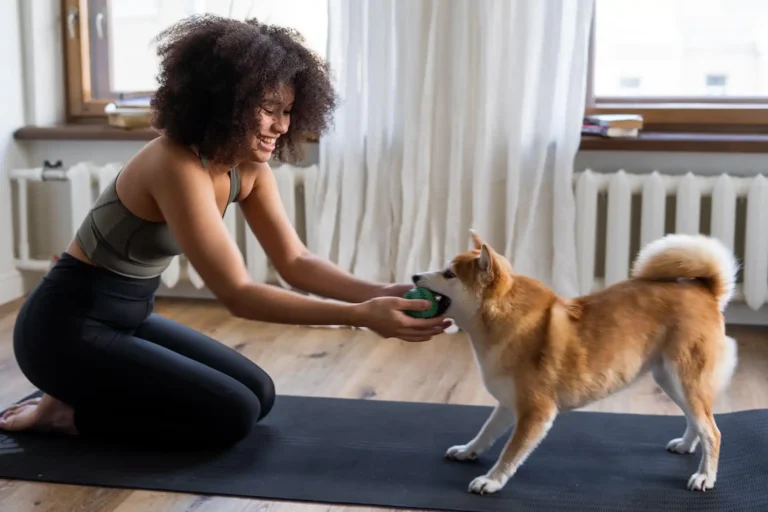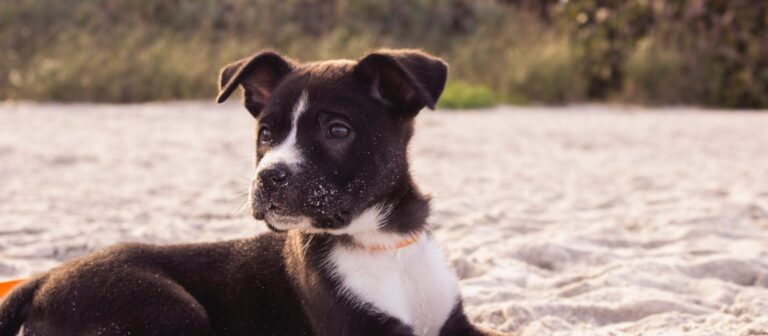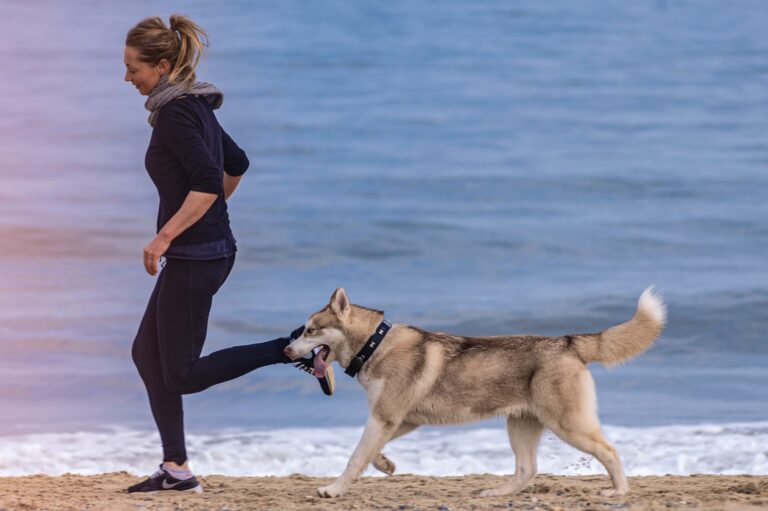Mental Stimulation ideas for your dog
It’s too easy to make dog walks the main stimulation your dog gets, however, when left to their own devices- dogs may need more than a good run around. Studies on free-ranging dogs show they spend significant time in their day foraging and chewing alongside other self-care behaviours, such as grooming.
The inability to engage in these species-specific behaviours may result in frustration, which may manifest in undesired behaviours such as destruction, increased vocalisation restlessness.
I encourage my clients to provide their dogs 2-4 activities a day, including walks. For example, they may do two walks, a training session and give their dog an independent mental stimulation activity such as a chew or Kong.
Management & Problem Behaviour Prevention
Many mental stimulation activities can be given to divert your dog away from problem behaviours.
Don’t want your dog to get in the way while you cook or eat dinner? Consider giving them a chew or a Kong.
Want to avoid your dog jumping on visitors- consider giving them a food puzzle or chew before you let your visitor inside.
Don’t want your dog to nag you for attention while you watch your favourite TV show, try and do a training session before they show starts and before they start nagging- so you meet their needs without reinforcing undesired behaviours.
Routine
It’s a good idea to add some variation in the times and frequency of activities, so your dog doesn’t expect them at certain times and plays up if you are unable to provide them.
Walks do require some structure, to meet their toileting and activity budget needs. For instance, your dog may be ready to leave the house and investigate the outside world following a long night’s sleep. However, I do also try and give my dogs one quiet day a week where they have either one long walk, instead of two walks, or they have two short walks and lots of rest at home. This helps rest any aches and pains they may be hiding. On these days, I often given them more home-based activities to do to prevent boredom.
Walks aside, I try to vary what enrichment activities I do with my dogs each day and also try to give them one day off a week from chewing or training- so they do not expect it from me each day and learn to switch off and wait for it to be offered. However, some flexibility is needed. If they really needed something to do and are ‘trapped’ indoors, it’s my job to provide them with enrichment.
What activities can you do?
Sniffing / Foraging: Sniffing is very tiring for dogs. Processing all of that information in the brain requires a lot of energy. Not only should sniffing be promoted on walks, by allowing your dog to sniff as much as they like, we can also promote it at home by hiding treats around the home or in the garden or giving them snuffle mats or snuffle boxes (card boxes with scrunched up paper inside).
Licking & Chewing: These behaviours have some calming benefits, helping stimulate the production and activity of calming neurotransmitters as well as those associated with positive wellbeing. A good ol’ trusty Kong toy or Lickimat with wet food inside can provide mental stimulation benefits. Freezing them can make them last longer.
You can get creative with Kong recipes, freezing a Blue Pet Co dental stick and plain live yogurt in a Kong.
Be sure to research any new foods you introduce- checking they are safe to give. Xylitol is a sweetener that is highly toxic to dogs.
Chewing is a behaviour often overlooked in dogs and many are given limited items to chew. A variation in textures should be provided and accessible across the day- such as split antlers, empty hooves, horns, olive brances, anco roots etc. You can then give your dog consumable chews such as pizzles, pigs ears or dried fish skins.
If you want your dog to be busy for an hour or so, give them a large marrow or knuckle bone. I put lots of old towels down for hygiene reasons.
Chews should always be given supervised and extra caution should be taken in multi-dog households or around children.
Shredding: The grab-bite and dissect parts of the predatory sequence is often missing from many dogs’ lives.
Eating food from a bowl only fulfils the consummation part of the sequence.
Giving your dog things to grab, tear and shred, such as a cardboard box or stuffed toy can provide an outlet for this intrinsic need.
Digging: Some breeds, such as terriers, love to dig. Without a structured outlet, they may resort to construction work in your garden! Providing a sand-pit with hidden toys can help target digging to a specific area.
Positive Reinforcement Training: Problem-solving can help build dogs’ confidence as well as their relationship with us. Training should be set at a level where they can frequently succeed, so to avoid frustration.
It’s sensible to keep higher arousal activities outside of the home, allocating time away from distractions on your walks to have short training sessions. Calm training sessions inside, such as co-operative care behaviours/ husbandry, can be tiring and help your dog rest quietly afterwards.
Get creative; Some dog owners are amazingly creative with their dog’s enrichment. The Facebook page Canine Enrichment is full of great ideas. Something as simple as raiding the cycling and hiding dried treats inside a clean, plastic bottle can keep some dogs entertained- albeit noisily!
Caution: Just be mindful when introducing anything new to your dog. Watch them carefully for chewing up small pieces – you don’t want them to swallow something inedible.
Trade it: If you ever need to take an activity off your dog before they have finished using it- swap it for a very high value treat to prevent resource guarding. You should only take something off your dog because you have to for their safety (such as the chew item becoming too small and a choke hazard, or you needing to leave the house), not because you think you should or that it will teach them a lesson.
